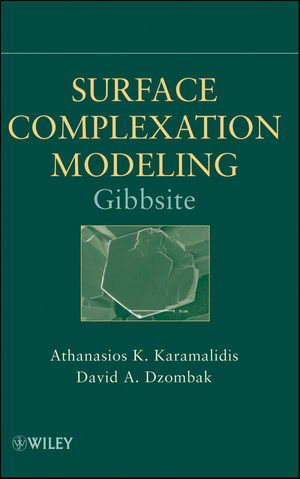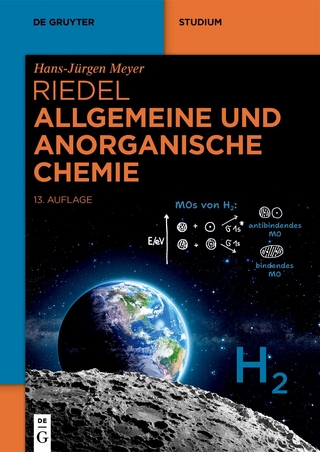
Surface Complexation Modeling
John Wiley & Sons Inc (Verlag)
978-0-470-58768-3 (ISBN)
ATHANASIOS K. KARAMALIDIS is a Research Assistant Professor in the Department of Civil and Environmental Engineering at Carnegie Mellon University. He has conducted research on the dissolution and surface reactions of complex mineral assemblages in aqueous systems. He has published his work in peer-reviewed international journals in environmental engineering and science, and in the proceedings of international conferences. DAVID A. DZOMBAK is the Walter J. Blenko Sr. Professor of Environmental Engineering in the Department of Civil and Environmental Engineering at Carnegie Mellon University. He is also Faculty Director of the Steinbrenner Institute for Environmental Education and Research. He has published numerous articles in leading environmental engineering and science journals, book chapters, articles for the popular press, and has authored two books.
Foreword xi
Preface xiii
1 Aluminum Oxides and Hydroxides under Environmental Conditions 1
1.1 Introduction 1
1.2 Occurrence of Aluminum Oxides and Hydroxides in the Subsurface 2
1.3 Occurrence of Aluminum Oxides and Hydroxides in Surface Water 4
1.4 Use of Aluminum Hydroxide in Water Treatment 6
1.5 Summary 7
2 Formation and Properties of Gibbsite and Closely Related Minerals 9
2.1 Al Polymerization Models 9
2.1.1 The “Core-Links” Model 10
2.1.2 The “Cage-Like” (Keggin-Al 13 Structure) Model 10
2.1.3 The “Continuous” Model 11
2.2 Formation of Gibbsite and Other Al Hydroxides and Oxyhydroxides 12
2.3 Aluminum Hydroxide Polymorphs: Structure and Nomenclature 15
2.4 Gibbsite 19
2.4.1 Kinetics of Precipitation and Crystal Growth 19
2.4.2 Structure 21
2.4.3 Common Techniques of Synthesis 21
2.4.4 Synthesized Gibbsite and Differences from Natural Gibbsite 24
2.5 Bayerite 25
2.5.1 Kinetics of Precipitation and Crystal Growth 25
2.5.2 Structure 26
2.5.3 Differences from Gibbsite 26
2.5.4 Synthesized Bayerite and Transformation to Gibbsite 27
2.6 Nordstrandite 27
2.7 Doyleite 28
2.8 Other Forms of Aluminum Oxides and Oxyhydroxides 28
2.8.1 Corundum (a-Al 2 O 3) 28
2.8.2 Boehmite (g-AlOOH) 29
2.8.3 Diaspore (a-AlOOH) 29
2.9 Other Forms Manufactured under High Temperature and Pressure 30
3 Types of Available Data 33
3.1 Gibbsite Structure Verification 33
3.2 Physical–Chemical Properties 34
3.2.1 Specific Surface Area 34
3.2.2 Surface Site Characterization 35
3.2.2.1 Hydroxyl Surface Sites 35
3.2.2.2 Surface Site Density 36
3.3 Acid–Base Titration Data 37
3.4 Cation and Anion-Sorption Data 40
3.5 Spectroscopic Data for Sorption on Gibbsite 41
3.6 Proton ReleaseUptake Data 43
3.7 Electrokinetic Data 43
3.8 Summary 44
4 Data Compilation and Treatment Methods 45
4.1 Collection of Data 45
4.2 Assessment of Data Quality 46
4.2.1 Solid Preparation Method 46
4.2.2 Type of Reaction Vessel 47
4.2.3 Nature of Background Electrolyte 47
4.2.4 Sorption Kinetics 48
4.2.4.1 Proton Sorption Kinetics 48
4.2.4.2 Cation and Anion Sorption Kinetics 49
4.2.5 Method of Solid–Liquid Separation 49
4.2.6 CO 2 Exclusion 50
4.2.7 Experimental Temperature 51
4.3 Compilation of Surface Properties 51
4.4 Extraction of Equilibrium Sorption Constants 51
4.4.1 Solution Activity Coefficients 52
4.4.2 Fiteql 52
4.4.3 Data Grouping 54
4.4.4 Selection of Surface Species 54
4.4.5 Selection of Best Estimates 55
4.5 Optimal-Fit Simulations 56
4.6 Presentation of Results 56
5 Surface Properties of Gibbsite 59
5.1 Surface Area 59
5.2 Site Density 62
5.3 Point of Zero Charge 64
5.4 Surface Acid–Base Chemistry 65
5.5 Effects of Dissolution on Gibbsite Surface Acid–Base Chemistry 76
5.6 Summary 80
6 Cation Sorption on Gibbsite 81
6.1 Modeling Methodology and Reactions 81
6.2 Available Spectroscopic Data and Use in Modeling 86
6.2.1 Copper 86
6.2.2 Lead 87
6.2.3 Cobalt 88
6.2.4 Cadmium 88
6.2.5 Manganese 88
6.2.6 Iron(II) 88
6.2.7 Calcium 88
6.2.8 Zinc 89
6.2.9 Mercury 89
6.2.10 Uranium 90
6.2.11 Thorium 91
6.3 Copper 92
6.4 Lead 99
6.5 Cobalt 107
6.6 Cadmium 117
6.7 Manganese 126
6.8 Iron (II) 127
6.9 Calcium 128
6.10 Zinc 130
6.11 Mercury 132
6.12 Uranium 142
6.13 Thorium 145
7 Anion Sorption on Gibbsite 149
7.1 Modeling Methodology and Reactions 149
7.2 Available Spectroscopic Data and Use in Modeling 153
7.2.1 Phosphate 153
7.2.2 Arsenate 154
7.2.3 Arsenite 154
7.2.4 Molybdate 155
7.2.5 Selenate 155
7.2.6 Chromate 155
7.2.7 Borate 155
7.2.8 Sulfate 156
7.2.9 Fluoride 156
7.2.10 Silicate 156
7.3 Phosphate 157
7.4 Arsenate 164
7.5 Arsenite 176
7.6 Molybdate 182
7.7 Selenate 185
7.8 Chromate 187
7.9 Borate 188
7.10 Sulfate 192
7.11 Fluoride 195
7.12 Silicate 197
8 Coherence and Extrapolation of the Results 199
8.1 Cation Sorption on Gibbsite 199
8.2 Anion Sorption on Gibbsite 204
8.3 Comparison of Gibbsite Surface-Complexation Constants with Those of Goethite, Hydrous Ferric Oxide, and Hydrous Manganese Oxide 208
8.4 Summary 213
References 219
Appendix A: Summary of Experimental Details 241
Author Index 283
Subject Index 289
| Erscheint lt. Verlag | 27.10.2010 |
|---|---|
| Verlagsort | New York |
| Sprache | englisch |
| Maße | 163 x 241 mm |
| Gewicht | 567 g |
| Einbandart | gebunden |
| Themenwelt | Naturwissenschaften ► Chemie ► Anorganische Chemie |
| ISBN-10 | 0-470-58768-7 / 0470587687 |
| ISBN-13 | 978-0-470-58768-3 / 9780470587683 |
| Zustand | Neuware |
| Haben Sie eine Frage zum Produkt? |
aus dem Bereich


